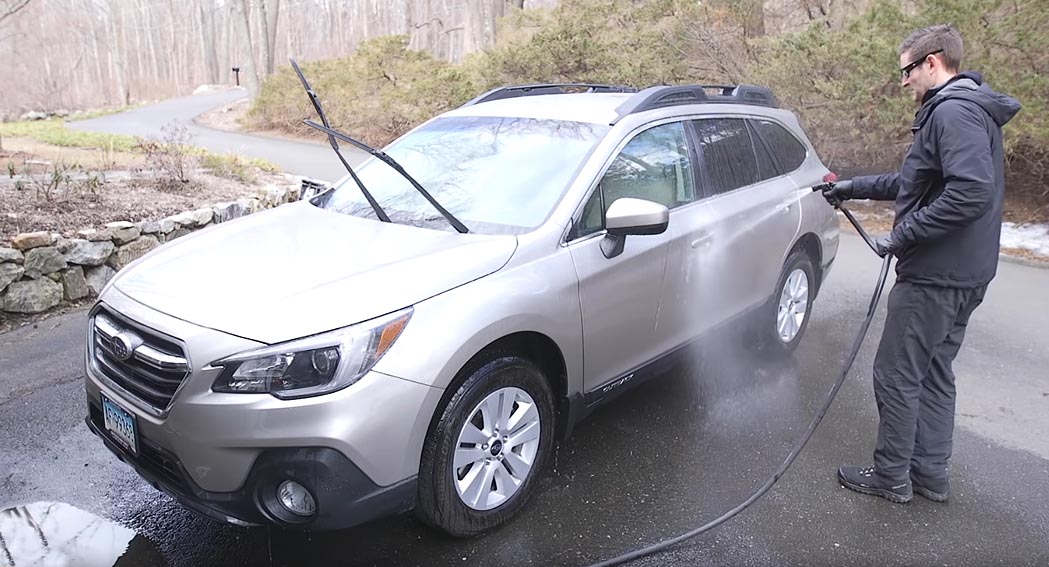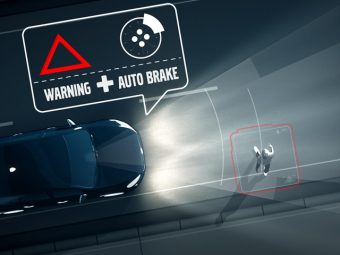Many auto enthusiasts believe that they can’t maintain the appearance of their cars properly without using X, Y, and Z name brand commercial cleaning products. What they often don’t realize is that most of these products contain chemicals that damage the environment, harm human health or both. For example, the products might contain petroleum derivatives, phosphates, hydrofluoric acid or volatile organic compounds.
The fact is that you can clean your car effectively without exposing yourself or the environment to toxins. Natural ingredients and tools are also usually gentler on a car’s paint and other exposed parts than commercial products. To make cleaning your car a healthier and better overall experience, follow these tips for using natural alternatives over chemicals:
1. Car Body
A mild dish detergent made from plants that don’t contain harsh chemicals and cotton jersey t-shirt fabric cloths or a natural sea sponge is perfect environmentally friendly tools for washing a car. Paper towels can scratch surfaces, and cotton bath towels leave behind fuzz balls and lint. The plastic fibres in most microfiber towels find their way into car wash runoff water, which increases micro-plastics ground and water pollution. If you choose a sea sponge instead of t-shirt cloths, always soak and rinse it several times before using it the first time. A new sea sponge’s pores often contain abrasive sand. You should rinse your car off thoroughly before washing it as well so that your cleaning tools don’t scrape or rub road dirt and grit across the surface. There is something else that will help you to keep your car clean for a longer time period. To learn more about it, visit here.
2. Headlights and Taillights
Headlights collect a combination of grit, grease and bug parts over time. They also take on a foggy or yellowed appearance because of plastic degradation from sun exposure. Taillights aren’t usually this bad and normally only require a basic scrubbing when washing your car’s body. You have several natural options for cleaning headlights. One of the most commonly chosen methods is to clean headlights with vinegar and water. You merely spray the surface with a solution made from equal parts of the two natural ingredients, wait five minutes for the mild acid in white vinegar to loosen the debris and then wipe the headlights clean with a cloth. For stains, fog and discoloration, use something a bit more abrasive like baking soda and toothpaste with a toothbrush. When you’re finished, you can reduce future build-up and discoloration with a coat of a homemade natural car wax cream. Apply it to the clean surfaces, wait a few minutes and then buff and polish.
3. Windshield and Windows
The fastest and easiest solution for making your windshield and windows shines is a glass cleaner made of equal parts white vinegar and water in a spray bottle coupled with the use of a spray bottle filled with clean water, a squeegee and cotton jersey t-shirt cloths. You start by washing the glass portions of your car at the same time as the car body with your eco-friendly dish detergent and water. After the car dries, you simply spray the vinegar and water solution on the windshield, remove the fluid with your squeegee and rinse both with water. Use the squeegee again on the glass to remove excess water and wipe along the frame with a cloth. Follow the same process with the exterior of the windows. With interior glass surfaces, follow the process for using the glass cleaner, but then use a clean cloth dampened with only water to remove the cleaner from the glass and a dry cloth to finish the job.
4. Tires, Hubcaps and Rims
Although you can remove most of the dirt from the tires, hubcaps, and rims while washing your car, you might have to deal with some extra problems in this area. For example, to remove large debris from around the hubcaps and mudflaps, use a soft-bristled natural brush with a small head and long handle that you can get into tight spots. To remove rust from metal hubcaps or the rims, rub the spots with a piece of wet aluminium foil followed by a cloth. If that doesn’t remove all of the rust, scrub rust spots gently with a small, soft-bristled metal brush and a mixture made from vinegar and baking soda and then rinse and dry the surface thoroughly. You can protect metal parts from future rusting with your homemade car wax cream or rust-resistant metal paint. To make your tires shine, apply a coat of natural oil like castor or lemon oil and then wipe away any excess. No Chemicals involved!
5. Upholstery and Mats
The same mild plant-based detergent used on the car’s body can also deep-clean fabric seat covers and mats. After you vacuum and dust the interior, you simply handle the detergent cleaner as you would a commercial upholstery cleaning product except that you apply it manually: spray the seats with the detergent using a spray bottle and then use your upholstery wet-vac cleaner to stuck up the excess liquid. Afterwards, rinse with clean water and then suck up the excess and remaining dirt. For leather upholstery, the job becomes a little tougher since water can stain the leather. Spray equal parts vinegar and water lightly on the surface and rub the solution into the leather. Follow with a light spray of clean water and then blot the surface with a dry cloth to soak up the liquid. To break up stains, rub the detergent or vinegar and water into the stain with a soft-bristled natural wooden-handled leather and vinyl brush and then rinse. For the final conditioning touch, apply coconut oil in the same way you would apply a non-natural leather car upholstery conditioning product.
6. Tough Stains
Cars often accumulate stains between cleanings, especially if car owners have kids or pets. The most common stains come from dark, oily or colorful beverages and food like caramel-based sodas, coffee, dark juices, grease, ketchup, and mustard. Other common stains come from dark dirt or clay, black shoe soles, crayon, pen or marker ink, blood, urine, and vomit. You can break up most stains made from food or body fluids by gently scrubbing them with suds from a natural coconut oil bar soap and a soft-bristled toothbrush. With a melted crayon or other crayon marks, you merely need to scrape off as much as possible, place a clean sheet of white paper against the mark and then gently heat up the area with a blow dryer. You can then scrub away the rest of the mark with baking soda and toothpaste. To remove ink, rub the stain gently with rubbing alcohol using cotton swabs.
7. Sticky Substances
Sticky candies, gum, adhesives and tar are among the many substances that you might have difficulty removing from your vehicle. It’s critical that you remove the bulk of any sticky substance before attempting to clean it away entirely. Otherwise, you might spread it around to clean areas near the stain. To remove these substances, you need nothing more than an ice cube: apply the ice to the area for five minutes and then scrape away the hardened substance. To break up the remaining stain, soak the area with either equal parts of vinegar and water or vinegar and the eco-friendly detergent, wait five minutes and then try to dab it away with a clean cloth. If all else fails, you can always apply a natural clear oil like coconut oil to the stain and then try to scrub it away with detergent and water and a toothbrush the next day. Of course, after you remove any sticky substance, you must rinse the area to prevent the cleaning solution from staining the surface. No chemicals involved!
8. Bad Odors
Lastly, most cars eventually start to smell bad unless they’re spritzed regularly with a fragrance. Most fragrant air fresheners though contain toxic chemicals. To get rid of bad temporary odors, you only need to open the windows and air out and clean the car regularly. If you’re dealing with a scent that lingers, such as pet urine or a powerful cologne, the best option is to soak up the odor by placing one or more boxes of refrigerator baking soda designed with air filters in your car. If you can’t find these boxes, create a baking soda sachet with an unused coffee filter and string. You can also add a few drops of tea tree or another fragrant natural oil that you like to the box or sachet to give the vehicle’s interior a particular scent. Hanging a potpourri sachet filled with dried herbs and flowers in the car is another solution.
It’s important to keep in mind that natural car-cleaning solutions can take longer to work than commercial chemicals/cleaners when dealing with rust and tough stains. That said, natural cleaners are worth the effort. By using them, you help create a healthier environment and protect you, your loved and pets from chemicals that can cause respiratory distress, allergic reactions, inflammation and even cancer. When you compare commercial and all natural car cleaners, it’s obvious that natural ingredients and tools are the better choices.








